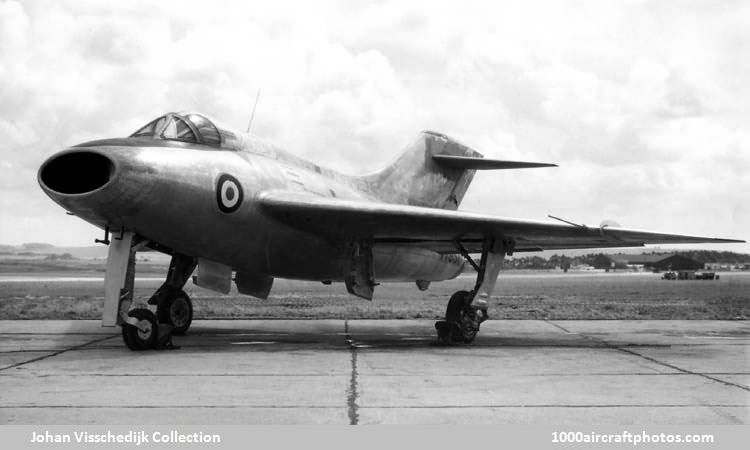Built to further the delta-wing research program initiated with the P.111, the pictured P.120 differed from its predecessor primarily in having an all-movable tail plane attached near to the tip of a redesigned fin and rudder assembly. The P.120 flew for the first time on August 6, 1952, but was destroyed in an accident caused by tail flutter on August 29, 1952, before a full comparison of its characteristics with those of the P.111 could be made.
Like the earlier delta research aircraft, the P.120 was powered by a 5,100 lb (2,313 kg) Rolls-Royce Nene turbojet, the intake for which was of flat, ovoid form. Interesting air brakes in four segments around the fuselage a little way behind the cockpit were a feature of the P.120, and these were later incorporated on the earlier P.111. Whereas the P.111 had a housing for a braking parachute on the port side of the rear fuselage, that of the P.120 was mounted centrally under the rudder.
Notable features of the P.120 included the exceptionally wide-track landing gear (14 ft 51 in), the main members of which folded inwards into wing housings (the nose wheel retracting rearwards), and the detachable wing tips. The wing planform and the leading edge sweep of the P.120 were identical with those of the P.111, while the redesigned vertical tail surfaces with sweepback on the trailing edge increased overall length.
During 1953 the P.111 airframe was modified internally and fitted with similar air brakes as the P.120 had. A nose probe containing a pressure head was fitted, and the aircraft was redesignated P.111A. Despite the relatively low power of the Nene turbojet, the P.111A was capable of attaining level speeds in the Mach 0,95 to 0,98 range and could exceed Mach unity in a shallow dive.
As the P.111A, the aircraft recommenced its flight-test program on July 2, 1953. On January 14, 1954 the P.111 was delivered to the RAE where it flew until June 20, 1958. Presently the aircraft is preserved at the Midland Air Museum, Coventry, UK."
|
A |
P.111 |
P.120 |
